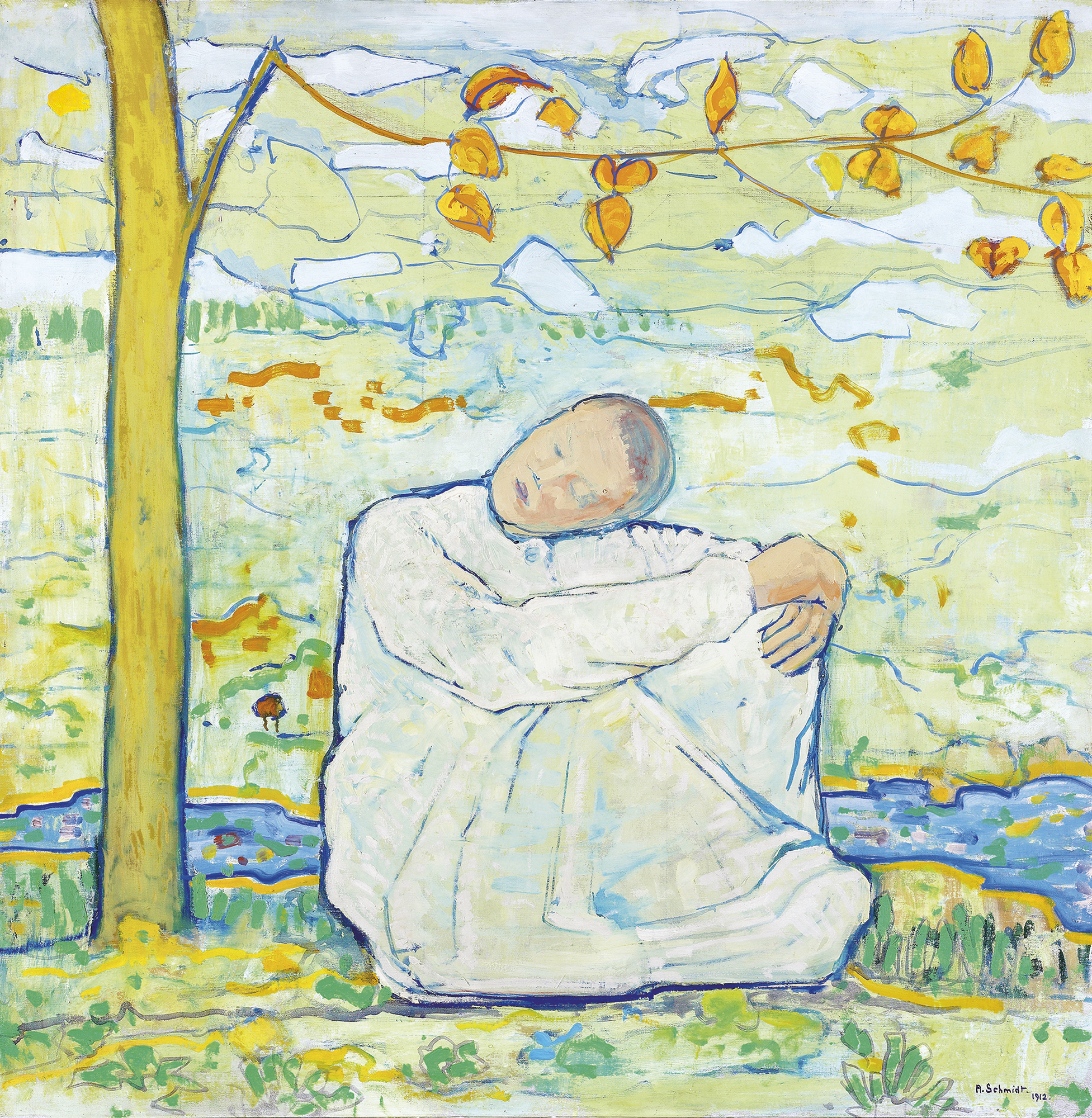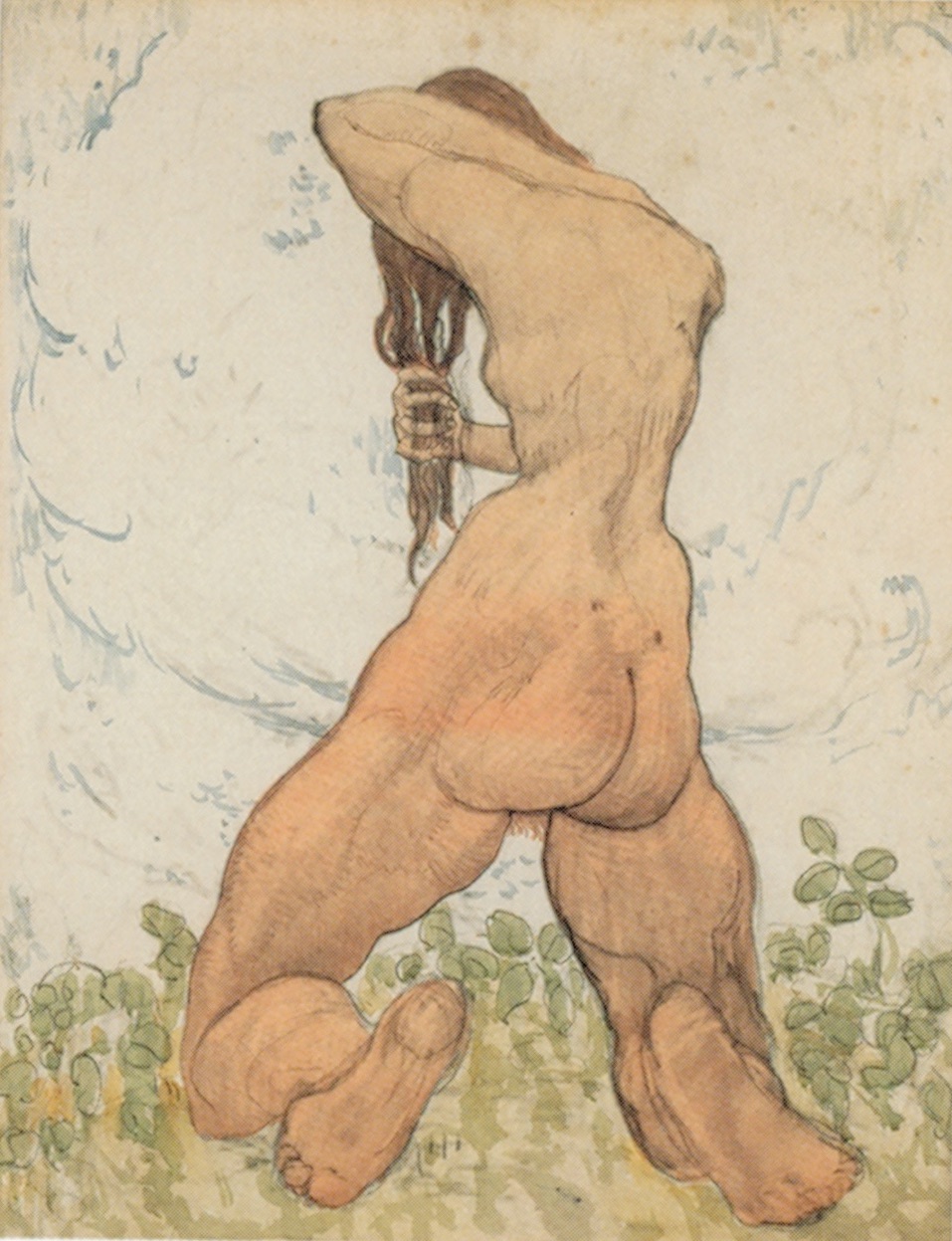The painter of silence who stands midway between symbolism and expressionism, Albert Schmidt tamed the medium in the wake of his teacher, Ferdinand Hodler. Born in Geneva in 1883, Schmidt, still only a child, discovers Hodler’s painting in his father’s collection.
He is, following studies at the School of Industrial Arts and the School of Fine Arts in Geneva, one of the young talents at the turn of the century exhibiting their work in Geneva and throughout the rest of Switzerland. Hodler recommends him for a 1918 show in Zurich: “Amongst the young he is one of the most individual and most expressive. All his works have style and character. He looks for the harmony of forms and his colour is very harmonious. For my part, I know lots of things by him that are really good.”
Like numerous artists in the late 19th century, Schmidt is influenced by music, in particular by Émile Jaques-Dalcroze’s theory of rhythm. In 1909 he is selected to show at Munich’s International Fine Arts Exhibition and the following year exhibits in Budapest along with Cuno Amiet.
Although Schmidt is dedicated to his art, the death of his father in 1912 forces him to take over the family’s small painting and plastering business, which he runs whilst continuing to practice his craft. In 1960, seven years after the death of his wife, the renowned painter and enamel-list Berthe Schmidt-Allard, he sells the business, a new phase that allows him to devote his time completely to painting. He dies in Geneva in 1970, leaving behind a modernist oeuvre that is too often relegated to the shadow cast by his eminent teacher.
He is, following studies at the School of Industrial Arts and the School of Fine Arts in Geneva, one of the young talents at the turn of the century exhibiting their work in Geneva and throughout the rest of Switzerland. Hodler recommends him for a 1918 show in Zurich: “Amongst the young he is one of the most individual and most expressive. All his works have style and character. He looks for the harmony of forms and his colour is very harmonious. For my part, I know lots of things by him that are really good.”
Like numerous artists in the late 19th century, Schmidt is influenced by music, in particular by Émile Jaques-Dalcroze’s theory of rhythm. In 1909 he is selected to show at Munich’s International Fine Arts Exhibition and the following year exhibits in Budapest along with Cuno Amiet.
Although Schmidt is dedicated to his art, the death of his father in 1912 forces him to take over the family’s small painting and plastering business, which he runs whilst continuing to practice his craft. In 1960, seven years after the death of his wife, the renowned painter and enamel-list Berthe Schmidt-Allard, he sells the business, a new phase that allows him to devote his time completely to painting. He dies in Geneva in 1970, leaving behind a modernist oeuvre that is too often relegated to the shadow cast by his eminent teacher.

